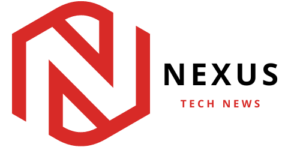As in any other business, the tendency to operate in silos is pervasive. In recent years, though, we’ve come to realize that the hazards of doing so extend far beyond mere solitude. This disposition can threaten financial margins, corporate expansion, and even human life. But happily, gone are the days where a night construction shift doesn’t know what the engineering team performed the day before, and explorers haven’t been able to communicate with their multi-team colleagues since their paths practically never crossed.
In reality, what occurs in a mine tens of thousands of feet above sea level in Chile’s Atacama Desert may be communicated in a Melbourne boardroom within minutes.
This is rapidly becoming a reality, in part via improvements in operations, as a result of cloud computing and the analysis and insight it provides. In addition, the cloud has the ability to and is now revolutionizing the mining industry. Due to an ever-expanding catalog of technology, software packages, sensors, and communications tools, Australia’s mining sector is undoubtedly at the forefront of the global heavy industrial revolution.
The cloud has accelerated the acceptance of concepts such as automation, digital twins, artificial intelligence, and a myriad of others that are rapidly gaining popularity. How far has technology progressed in Australia’s mining industry?

The status quo for cloud mining
Satish Penmetsa, CEO and co-founder of GroundHog, stated that the country was “undergoing an exciting moment of innovation” while announcing the opening of the company’s first facility in Australia in November 2022. The mining digitalization expert from California stated that the move was in reaction to rising consumer demand. “This change assures that we will continue to provide exceptional assistance to our clients as they modernize their organizations to allow quicker data-driven choices,” he continued.
Before then, the solutions provider has been assisting Australian customers remotely, delivering technologies that increase operations and the environment, health, and safety via an open cloud-based platform that, according to the company, streamlines the workflows of mining operations. It claims that its user interface is available to users of all skill levels via hardware, software, online, and mobile apps that can be readily integrated into existing infrastructure.
The company’s offerings now include a learning management system. The enterprise edition of the system enables digital management of certificates and licenses, allowing safety rules compliance to be monitored throughout an organization’s many regions and locations. Moreover, it offers online worldwide training courses and resources.

Proficient in digital
The issue of upskilling personnel is quickly capturing the attention of mining firms in Australia and throughout the world. Ernst & Young, on behalf of the Minerals Council of Australia, found in a 2019 report that the industry will continue to see the influence of new technologies, which would alter the skills it required beyond traditional jobs such as drill operators, surveyors, and field geologists. Cloud computing, information sharing, and big data, as well as robotics, drones, and remote control systems, would be the primary drivers.
It stated, “The mining sector will need a proactive, strategic, and innovative approach to the future of employment.” Overall, it can be stated that the industry will profit from the productivity increases of technology and that it will complement existing processes to achieve greater results.”
This does, however, provide a new problem to the mining industry: the transition to cloud-based, automated tasks means the sector will confront a talent war unlike any in the past. Obviously, physical labor will continue to be a pillar of the business, but digital skills will become a need, putting mining firms in competition with industries such as banking, retail, and healthcare, to mention a few.
Lubricating the gears
The argument that mining is a particularly “dirty” industry might be puzzling to anyone outside of the sector, yet the actual reality is that it is. Grease is utilized throughout disciplines for a variety of purposes, but they all serve the same purpose: to guarantee that machinery continues to operate at optimal levels.
GreaseBoss, an Australian start-up and recent award-winning innovator, is employing cutting-edge technologies and the Industrial Internet of Things to help mining companies better manage their greasing needs by informing workers on when to apply grease, recording that data, and displaying it on a dashboard for site management.
GreaseBoss is not the first automatic greasing system, but its data collecting capabilities provide extra advantages. Due to its capacity to communicate with other corporate systems, such as automated supply ordering or maintenance owing to wireless connectivity, its AI algorithms can detect defects in mines before a worker could. Its grease monitoring sensors, which are attached to standard head units, endpoint units, and multi-end point units, can reportedly be mounted on nearly every portion of a machine, a global first.
This, according to GreaseBoss, may help mine operators enhance output by 35%, cut breakdowns by 70%, and reduce maintenance expenses by 25%. The firm received the “Best Product Launch Award” at the 2022 Queensland Mining Awards for its product.
Exploiting the cloud link
Connectivity, or the lack thereof, has been an issue for the profession for many years, particularly for those operating in the most distant mines in Australia. For the fly-in, fly-out population, lengthy durations of separation from family can be a significant obstacle. Providing employees with the ability to chat with and even view their loved ones is essential for their well-being and productivity.
The advancement of satellite technology, particularly in low earth orbit, is of great importance. They provide low-latency connections comparable to the conventional fiber networks to which we are used. In addition, great effort is being invested in the development of long-range Wi-Fi networks with ultra-low latency and high data rates.
A research team at the Centre for Internet of Things and Telecommunications at the University of Sydney is developing one such product. According to Professor Yonghui Li, Wi-Fi has been hampered by low range and excessive latency, rendering it unreliable and susceptible to disconnections. As a result, installing these systems across expansive locations, such as underground mines, is costly and frequently results in poor signal quality.
“Our system is the world’s first long-range, high-rate Wi-Fi system that is compatible with standard Wi-Fi and supports both mobile and multiple-access terminals,” he explained. It provides a cost-effective solution and opens up new possibilities for real-time surveillance, picture and data transfer, all while ensuring low latency, which means it does not experience lag and can be utilized for mission-critical operations.
A robot uprising
A recent partnership between Australian-based mining robotics expert Australian Droid and Robot (ADR), PBE Group, and Rajant resulted in the deepest known remote underground mine examination. The facility is not located in Australia. In a collapsed limestone factory in the United States, the group utilized autonomous remote mine inspection technology to analyze the 1.7 km below-ground site without human intervention.
The mine was surveyed by a fleet of autonomous robots supplied by ADR and managed over Rajant’s BreadCrumb wireless nodes in less than a week. The most difficult obstacle was the absence of connectivity. To overcome this issue, the team created a communications network with low latency and high capacity covering around 1,800 feet.
This allowed the restoration of the mine to proceed rapidly, reducing operating delays and eventually financial losses. Yet, the fact that the solution eliminated the need for physical inspectors on the ground, keeping them out of harm’s way, was deemed an invention that would continue to place safety at the forefront of the modern mining sector.

